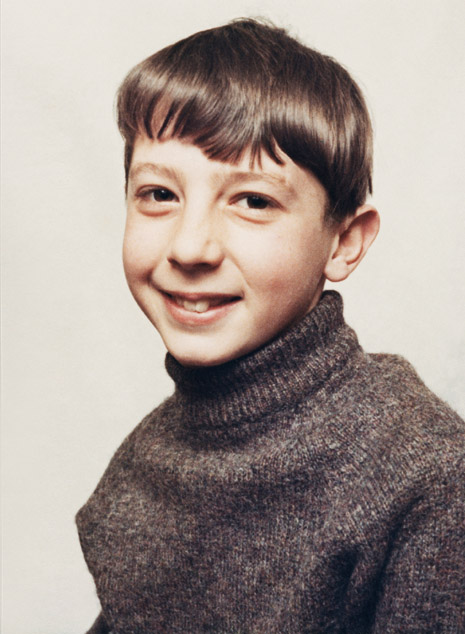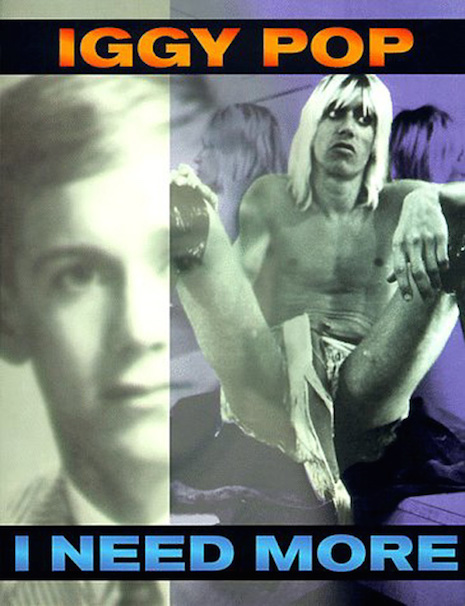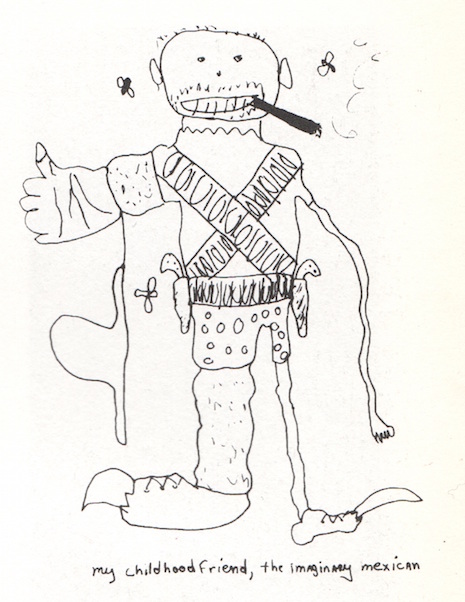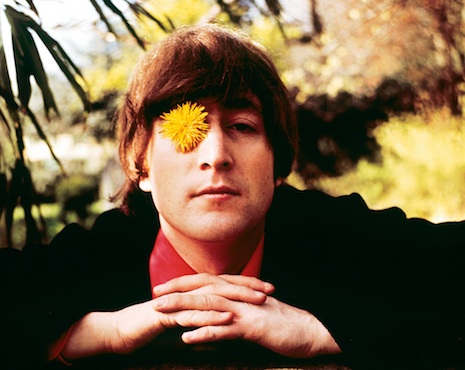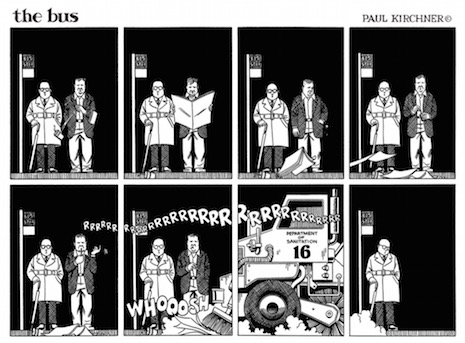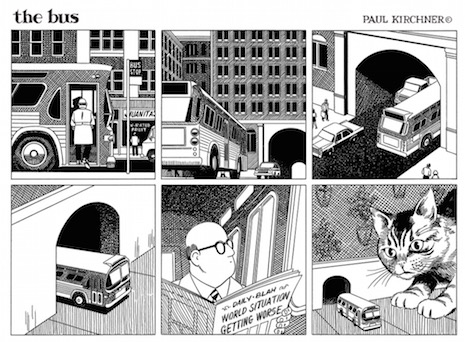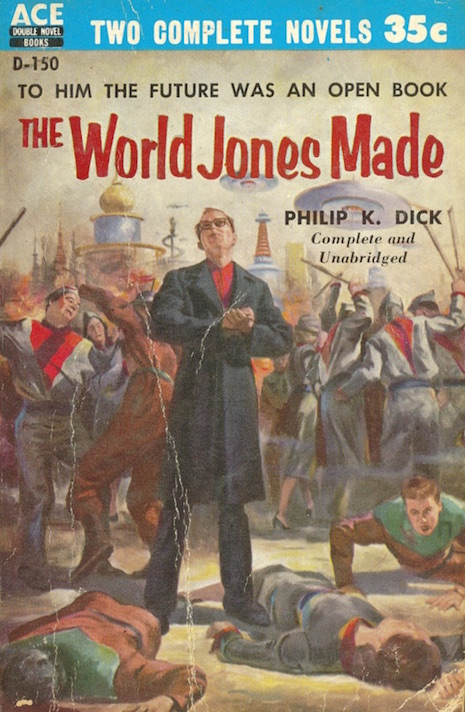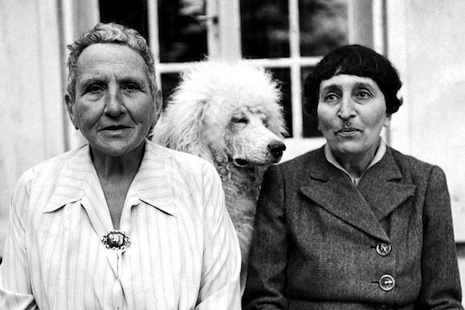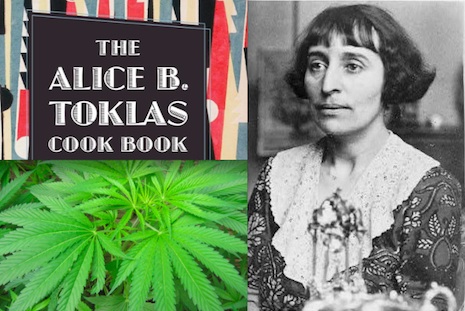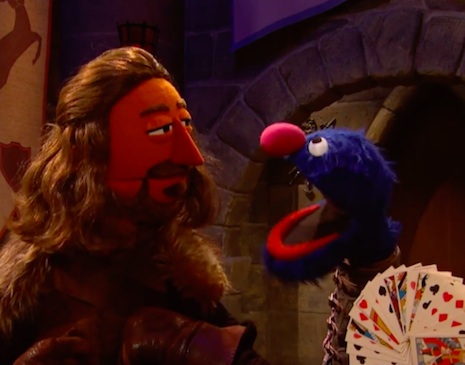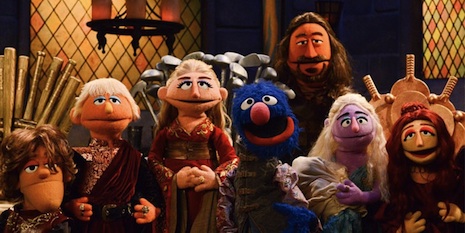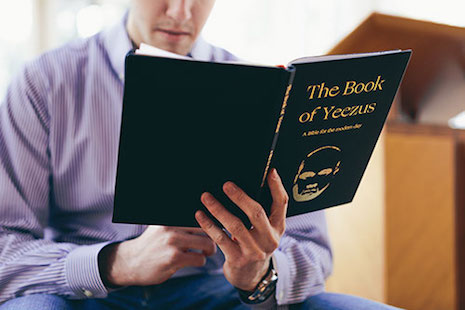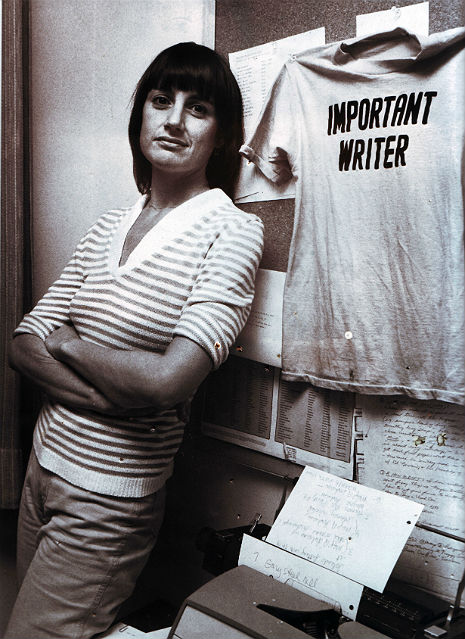
With the imminent retirement of the great David Letterman nigh upon us Dangerous Minds pal Mike Sacks, author of And Here’s the Kicker: Conversations with 21 Top Humor Writers and Poking a Dead Frog: Conversations with Todays Top Comedy Writers
and Poking a Dead Frog: Conversations with Todays Top Comedy Writers , the two best books ever published on the creative process of writing comedy, has generously allowed us to publish his extended interview with Late Night‘s original head writer, Merrill Markoe.
, the two best books ever published on the creative process of writing comedy, has generously allowed us to publish his extended interview with Late Night‘s original head writer, Merrill Markoe.
It was the Emmy award-winning Markoe, arguably as much as Letterman himself, who set the silly, ironic, smart and absurd tone of the show. This in-depth exploration of what made Late Night such amazing and precedent-shattering television during her tenure is an absolute pleasure to read.
Born in New York and raised in New Jersey, Miami, and the San Francisco Bay area, Merrill Markoe spent her youth reading Robert Benchley and Dorothy Parker, as well as watching W.C. Fields for his “bizarre word choices.” She attended Berkeley and, after receiving a Master’s in Arts in 1973, she tried teaching art at the University of Southern California for a year but found herself restless. Instead, she audited a few scriptwriting and filmmaking classes and, in 1977, landed a writing job for The New Laugh-In, sans Rowan and Martin. The show, to the surprise of nobody, was a disaster, even with (or because of) cast members such as Robin Williams and former child evangelist Marjoe Gortner. (Not familiar with him? Rent the 1972 documentary Marjoe—please.)
When TV proved frustrating, Markoe tried her luck on the stand-up circuit in Los Angeles, mostly at The Comedy Store and the Improv, where she became friends with such promising (if still unknown) comics as Andy Kaufman and David Letterman. After a few wildly successful appearances on The Tonight Show, Letterman was given his own daytime talk show on NBC in 1980, and he brought in Markoe (whom he’d been dating since 1978) as his head writer. The show didn’t last long, partly because Letterman and Markoe’s humor didn’t translate to an early-morning crowd, and partly because they nearly burned the studio down (more on that later). Within four months, the show was canceled.
But, in 1982, NBC gave Letterman another chance, and, more important, a better time slot. Late Night with David Letterman—which came on just after The Tonight Show, hosted by Letterman’s idol, Johnny Carson—was a perfect fit, and, thanks largely to Markoe’s indispensable collaboration, it became a unique and inimitable comic creation.
Six years later, in 1988, Markoe abruptly left the show. As she’s written on her website, she’d “plumbed the depths of [her] ability to invent off-beat, comedic ideas for acerbic witty white male hosts in suits.”
Markoe moved back west, to Los Angeles, where she had little problem finding work. She wrote for TV shows as diverse as Newhart (1988), Moonlighting (1989) and Sex and the City (1999), and appeared as a writer/reporter on HBO’s Not Necessarily the News (1990) and Michael Moore’s political-satire TV Nation (1994). She also discovered a writing life outside of TV, contributing comedic essays and columns for Esquire, Glamour, People, Rolling Stone, Time, U.S. News & World Report, as well as The New York Times and the Huffington Post. She probably made the biggest impact, however, with her humor books, which have included such critical and fan favorites as What the Dogs Have Taught Me (1992), How to Be Hap-Hap-Happy Like Me!
(1992), How to Be Hap-Hap-Happy Like Me! (1994), Merrill Markoe’s Guide to Love
(1994), Merrill Markoe’s Guide to Love (1997), It’s My F—-ing Birthday
(1997), It’s My F—-ing Birthday (2002), The Psycho Ex Game
(2002), The Psycho Ex Game (2004), Walking in Circles Before Lying Down
(2004), Walking in Circles Before Lying Down (2006), Nose Down, Eyes Up
(2006), Nose Down, Eyes Up (2008), Cool, Calm & Contentious: Essays
(2008), Cool, Calm & Contentious: Essays (2011).
(2011).
Mike Sacks: You once described yourself as “one of those 1960s art-student types.” Were you in any way a radical?
Merrill Markoe: I was certainly against the war in Vietnam. And I attended a Black Panther rally once—by myself, I might add. I was one of the few white people there. What I was doing there I cannot exactly explain, except that I attended almost every event that was within walking distance at the time. But, me being me, I always left early. I left every important cultural event of the sixties and seventies early. Name any one. Altamont? I left before the killing. I felt compelled to attend these events, but I never really liked big, angry crowds, or drugs, or the smell of patchouli. By the way, everything smelled like patchouli back then! Even sweaty, knife-wielding bikers who drank Ripple.
One of the few events I did not attend was Woodstock. I wouldn’t have enjoyed being a part of that big, happy, muddy, mellow community. I probably would have been standing off on the sidelines somewhere, in my beloved paint-splattered clothes, complaining about the weather and the sound system, and making snide remarks about all the embarrassing free-form naked dancing. Talk about a place that probably reeked of patchouli. No question I would have definitely left early.

So it wouldn’t be a stretch to say that you felt like an outsider in the sixties?
I’m very consistent; I’ve felt like an outsider every single decade. Some of it is because I struggle to control my tendency toward contrarianism. If I know there is something I am supposed to be doing or saying or wearing, I feel compelled to resist—particularly with creative endeavors, like writing. If I see an obvious punch line or plotline driving toward me, I can’t help but make a sharp left turn into the unexpected. I don’t like to replicate what I’ve seen done before—I don’t like to give people what they expect. I think it’s my job to come up with a surprising angle or to add some personal twist.
You first met David Letterman when you were doing stand-up in Los Angeles in the late seventies. Would you say that one of his strengths as a stand-up, even at the beginning of his career, was the degree to which the audience felt a strong rapport with him—that they always felt they were in on the joke?
Yes, correct. He was always a crowd pleaser. Plus, he always had Johnny Carson in mind as his model. Dave always knew how to connect with an audience, even from the very beginning.
Both you and Letterman started in the trenches of showbiz. Can you tell me about the first TV show you worked on together?
Dave and I worked on a 1978 CBS variety show called Mary, starring Mary Tyler Moore and featuring Michael Keaton. I don’t know if it qualifies as the “trenches” of show business, but I do know it was canceled after three or four episodes, even though 60 Minutes was the lead-in and Mary Tyler Moore was America’s sweetheart. The show was an uncomfortable combination of old showbiz style variety, mixed with a miscalculated attempt to include some of that wacky, absurdist comic sensibility that the kids liked so much from that new program Saturday Night Live.
For example, the Mary show did a parody of the Village People song “Macho Man” that had Dave and Michael Keaton dressed in L.L.Bean catalog outfits, in a setting that was made to look like a scene from Deliverance. I forget where the comedy was supposed to be in all this. I do know the powers-that-be didn’t realize that “Macho Man” was a gay anthem. I also remember vividly that Dave was in real agony about this bit of levity.
What was the second TV show you both worked on?
Leave It to Dave. It was a 1978 pilot for Dave’s own talk show, which never actually made it to air.
From what I’ve read, this is a notorious show. The set resembled a pyramid, and Letterman sat on a throne.
Because this was at the very beginning of Dave’s talk show career, he was sort of afraid to assert his point of view. There were people he hired and put in charge who supposedly knew all about the right way to execute a talk show. Unfortunately, one of their goofy ideas was to have a pyramid-shape on the set that contained built-in benches covered with shag carpeting for Dave and his guests to sit on. No boring old-school desk and chairs for us! Better to look like the interviews were taking places at a “carpeteria” trade show at the Luxor Hotel in Las Vegas.
The set was not even the worst idea that came down that particular pike. I remember that one of Dave’s managers wanted the guests to make their entrances by sliding down a chute and then landing on a sea of throw pillows. But even more vivid, is the memory of how little blood there was in Dave’s face when he was presenting the news to me. Somehow we succeeded in getting that idea shit-canned.
How did your next project, The David Letterman Show, come about? This morning show, a precursor to Late Night, was on NBC for only a short period in the summer and fall of 1980, but it became very influential with comedians and humor writers.
Around this time, Dave began appearing on The Tonight Show, and I was helping him come up with comedy material for those appearances.
Do you remember any of the jokes you wrote for him?
Here’s one: “The commercial for Alpo dog food boasts that Alpo is superior because it contains ‘All beef and not a speck of cereal.’ My dog spends his days going through the garbage and drinking out of the toilet. Something tells me he might not mind a speck of cereal.”
So Dave was getting a very good response from his Tonight Show appearances, and it didn’t take long for NBC to offer him his own morning talk show. Ninety minutes a day. Live. At 10:00 A.M. This prospect seemed less appealing to me than it did to Dave, but by now I was in over my head with regard to both of Freud’s two big areas: work and love. So, I just kept playing along.
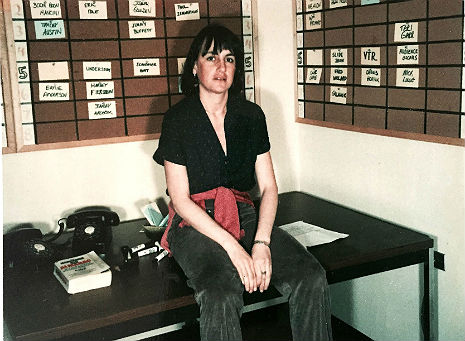
Steve O’Donnell—a longtime writer for Letterman—once described the show’s staff as those who really liked television but also kind of hated television. Was this true for you?
Yes, absolutely. I was particularly sick of seeing everyone on television doing that bigger-than-life, fraudulent, full of shit television persona—which was mainly how the shows all worked then. I welcomed the idea of a host being caught having real reactions to odd situations.
A lot of the segments on the morning show later showed up on Late Night. Can you tell me how “Stupid Pet Tricks” began? Was it meant to be a one-time deal only?
One immediate task—when we were determining how to construct a daily format—was to create segments that could be repeated. Since there was a horizon of future shows spreading out in front of us that seemed to stretch into infinity, it seemed to call for free-form thinking. Dave and I had two dogs and we wanted to do something with animals besides just having the guy from the zoo bring on the pygmy marmosets. I remembered how in college my friends and I would be hanging around in the evenings, talking and drinking. One form of constant entertainment was to put socks on this one dog. Everyone I knew did some version of a silly thing like that with their pets, so we ran an ad to see if we could pull a segment together like that.
When it succeeded, we mutated that idea into “Stupid Human Tricks.” We also considered “Stupid Baby Tricks,” but pulled the plug because—based on what we were seeing in the other two categories—we were afraid it would encourage child endangerment.
Were you responsible for “Viewer Mail”?
More or less. When we started “Viewer Mail” on the morning show, originally the idea was meant as a kind of parody of something 60 Minutes was doing, where they’d show a mailbox and a magnified fragment of a letter. Their letters always commented on something of importance: “Regarding your piece on nuclear disarmament, I just wanted to say …”
I thought it would be funny to show the mail we were receiving, which was mostly pages full of scrawled non sequiturs from deranged people. By the time the show re-appeared at night, this had evolved into little sketches that played off the content.
Do any other particular moments stand out from the morning show?
It was pretty much nonstop bizarre particular moments. One highlight was when we decided to celebrate the 50th wedding anniversary of a couple from Long Island named Sam and Betty Kotinoff. We selected them from a group of people who wrote in and volunteered. Our plan was to show snippets of this big party throughout the regular broadcast, and we would check in with them to see how everything was going.
For music, we hired the Harve Mann Trio, a wedding band dressed in tuxes. We also hired a very flamboyant decorator and party planner to do the catering. He not only brought in ice sculptures, but he also staged a lovely finale, where synthetic rose petals would float down from the ceiling while all the revelers held sparklers and swayed in contented delight. So it came to pass that as Dave signed off, the rose petals floated down and met the sparklers and created a number of small fires. As the credits rolled, the show ended with the Kotinoff family stomping out flames, as stage hands rushed in with fire extinguishers. Wafting from behind the clouds of smoke was Harve Mann still singing his closing song, “Can’t Smile Without You.”
Dave and I were really mortified until we saw the tapes. Then we couldn’t stop laughing.
What did you hope to achieve with this morning show? Did you feel that it was time for a talk show that reflected your own sensibility?
Yeah, both Dave and I felt that way. But Dave had more respect and passion for the history of TV talk shows than I did. Besides his love for The Tonight Show, Dave’s favorite role model was always the old Steve Allen Westinghouse Show [1962-1964], which had elements of stunts, character pieces, and audience interaction. I liked some of Steve Allen’s work as well, such as when he would jump into a vat of Jell-O, or had himself covered with tea bags so he could be dunked up and down inside a giant aquarium by a crane to make an enormous container of tea.
But to be honest, I never much liked The Tonight Show with Johnny Carson. Dave used to say that Johnny Carson seemed like the hip uncle whom he wanted to please. But to me, that show was a place where they never booked any smart women. I couldn’t help but view it through the prism of my U.C. Berkeley Art School experiences, which boiled down to a simple “fuck that plastic showbiz shit.”
What smart women in particular were missing from The Tonight Show?
Any smart women, of any stripe. Writers, reporters, producers, filmmakers, artists, scientists, eccentrics. No comediennes ever appeared on that show besides Joan Rivers and Phyllis Diller. Certainly none of the comediennes my own age appeared on the show.
On The Tonight Show, women were either amazingly glamorous actresses or they were booked to create cleavage-related humor and flirt with Johnny. I guess there must have been exceptions I am not remembering—the opera singer Beverly Sills, for example, or Carol Burnett.
But, as a whole, there never seemed to be any cerebrally oriented female content. I thought of it as one more example of the old showbiz sensibility that I was so sick of. Johnny reminded me of Hef in Playboy After Dark. Dave could look at Johnny and see a guy with whom he could joke and communicate. I would only see the kind of guy who would want no part of me and my kind.
More Merrill Markoe after the jump…












